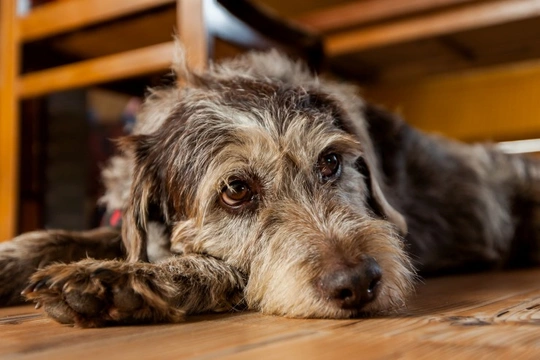
How a dirty or messy home can affect your dog’s health
Everyone has different standards when it comes to how we keep our homes – what to one person might be clean and comfortable might make another person feel that the environment is too perfect and sterile, whilst a different person might find it a little too unpolished!
However, whether you like to keep your home pristine and with everything in its place at all times or if you are happier living in a more relaxed, casual environment, it is still important to pay some basic attention to keeping your home itself clean and safe. This can be more of a challenge when you have a dog, as dogs aren’t naturally very tidy animals, and can often cause a lot of mess and chaos just as part of going about their daily lives!
Even so, having a home that is dirty or very disorganised can have a direct impact on your dog’s health – and this means that as well as basic cleaning and tidying to keep your home safe and healthy, you should also think about areas of the home that you can’t see or don’t use very much, which may be harbouring hidden dangers too.
In this article, we will look at some of the most common canine health problems and issues that can be caused or worsened by living in a dirty or messy environment – and why. Read on to learn more.
Fleas
Even if you are vigilant about treating your dog regularly to prevent fleas, fleas are very hardy at certain stages of their lifecycle, and can remain dormant in soft furnishings like carpet, curtains, dog beds and fabrics for many months or even years at a time.
This increases the chances of your dog picking up fleas and flea larvae within the home, and of course this in turn contributes to the potential development of flea bite sensitivity.
Carpets and soft furnishings that are not washed regularly and homes that are not treated for fleas even if your dog is can all affect your dog’s health over time.
Dust mites
Dust mites are present in every home to some extent, but some dogs are very sensitive to them, so if you don’t wash your bedding often enough or don’t wash it at high enough temperatures, this can cause allergy symptoms in your dog, as can carpets. Using hypoallergenic bedding and vacuum cleaner filters designed to remove dust mites will help, as will regularly cleaning and changing the bedding and generally, keeping your home free from dust.
Black mould
Black mould can be found lurking in dark, damp corners in many homes – such as in the corner of the ceiling or in the cupboard under the sink. Black mould can cause respiratory problems and sensitivities in both dogs and people, so if you know there is a patch of black mould lurking somewhere in your home, you should tackle it and not simply ignore it.
Dust and dirt
A home that is very dusty and dry can cause respiratory problems and coughing in dogs, particularly if they cannot avoid inhaling dust that has settled all around them. Wash your dog’s bedding and anything else they use regularly, and don’t allow dust to build up to form a surface across your house!
Dirty food and water bowls
Your dog’s food and water bowls should be washed up with hot soapy water every day, and you shouldn’t simply pour fresh food into a dirty bowl, particularly one that still has remnants of dried-on food crusted around it.
Also, you shouldn’t leave wet food down for your dog for hours, as this can soon grow bacteria in a warm home – and may even be targeted by flies.
Washing your dog’s bowls daily and ensuring that their food and water are always fresh will help to keep your dog healthy.
Food and bins
Leaving food sitting out on the table or kitchen worktop can be very tempting for your dog, and of course, not all human foods are safe for dogs. Even those that are should not form the main part of your dog’s diet, so always clear up and dispose of food waste quickly, and don’t leave piles of half-eaten food and dirty plates in reach of your dog – not only might your dog eat something unsuitable, but it will also attract flies and bacteria.
Additionally, don’t leave your kitchen bin to get so full that it starts to fester, and ensure that your dog can’t nudge it open, using a childproof catch or weights on the top of it if needed.
Toys and loose objects
There’s nothing wrong with leaving toys that belong to your dog or kids around the house as long as they don’t turn into a tripping hazard – and anyone with either a dog or a child will know that it can be virtually impossible to keep the home totally free of toys that aren’t in current use.
However, making sure that kids’ toys or other small, loose objects are cleared up out of the dog’s reach promptly after use can help to keep your dog safe.
General hazards
Virtually anything can become a hazard to a dog in the right situation, and chemicals and cleaning products are among them – so when you do clean your home, make sure that you put everything away again safely out of your dog’s reach, and don’t leave cupboards containing toxic or caustic substances open where your dog can reach them.



